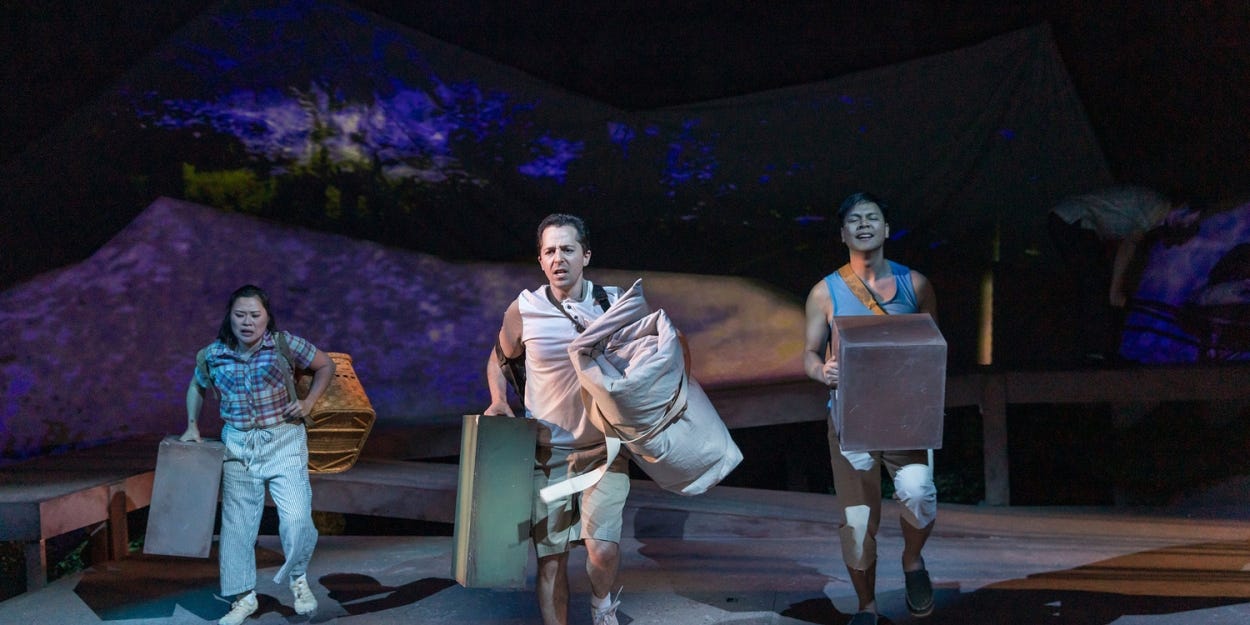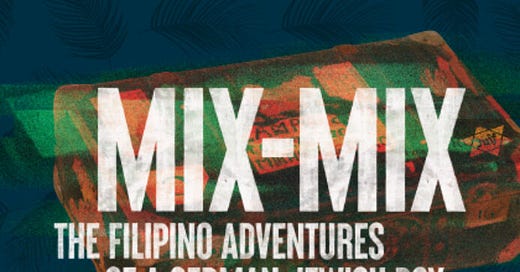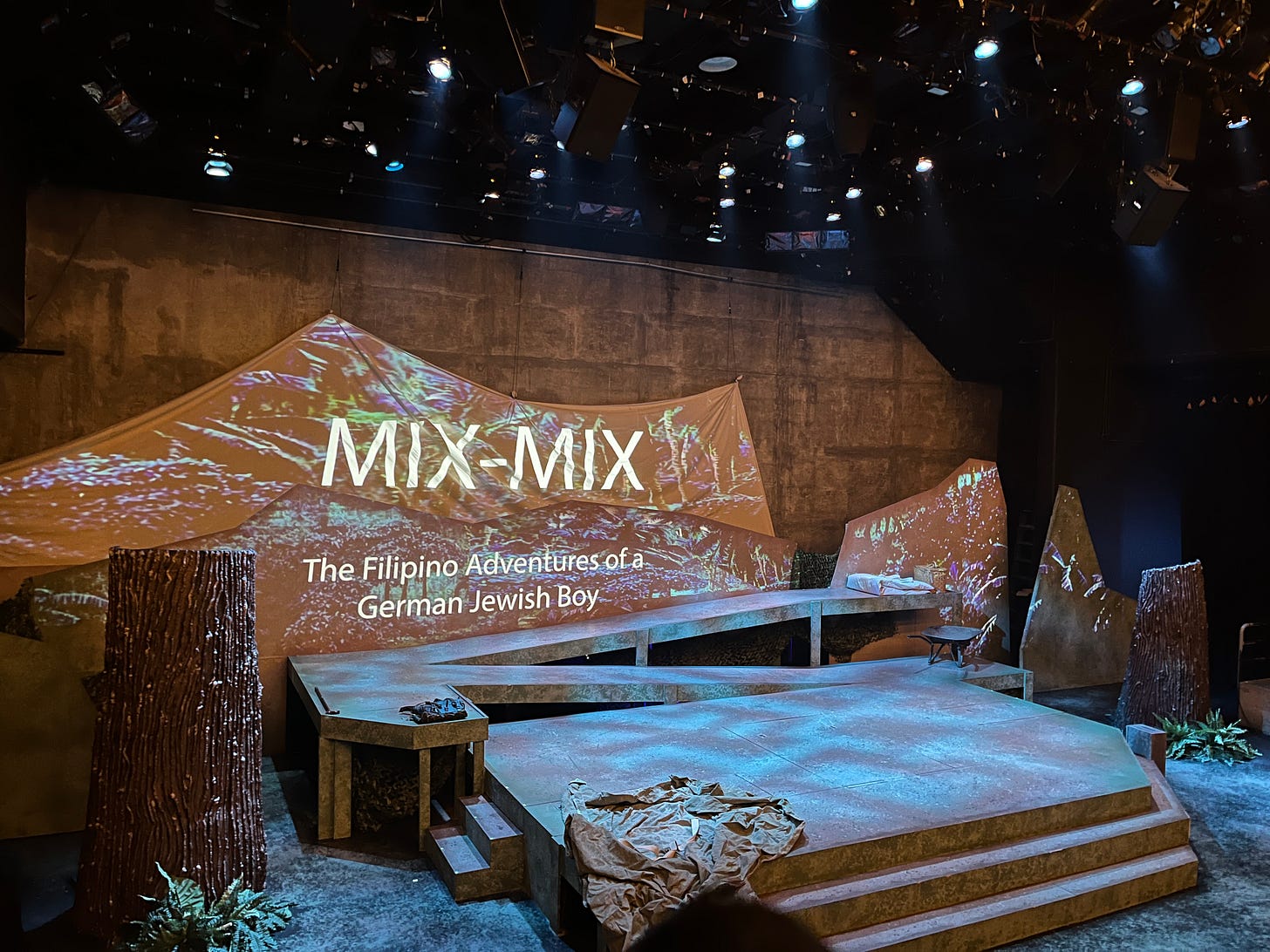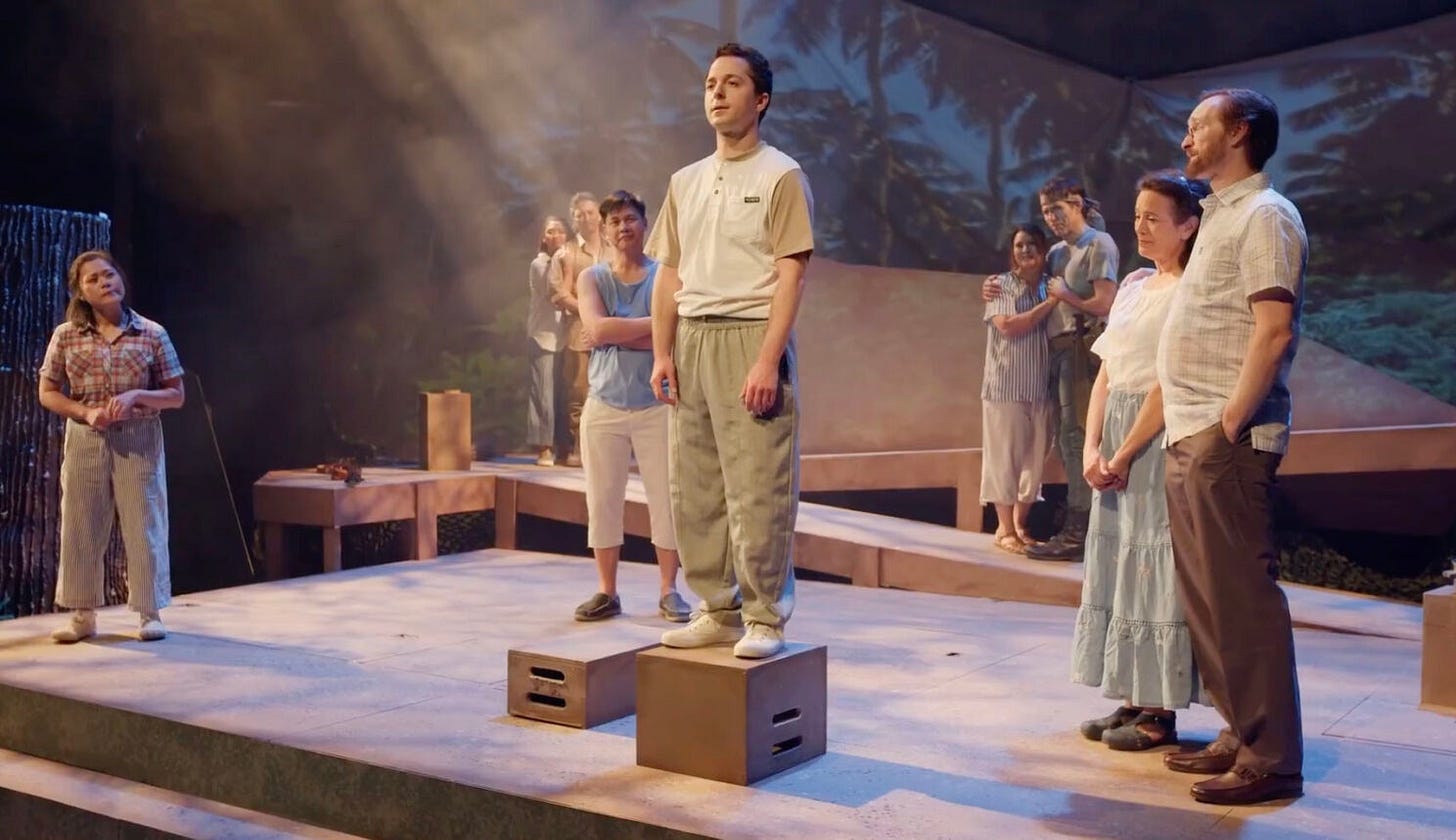So I went into this play completely blind. Didn’t know what it was about, who was in it, where it was. I obviously figured things out very quickly but it was one shock after another that didn’t let up until I was walking out of the Latino Theater Co.
Which wasn’t a bad thing! I had no expectations so I didn’t have to temper those when I walked into the theater and I was able to immerse myself when the lights dimmed and the show started.
Mix-Mix tells the story of a little white boy in the Philippines.
The fear with any white protagonist in a foreign land is a trip, fall, and a spiral into the White-Savior-Trope. We’ve all seen this in the cinemas, it’s not an uncommon trope, but it’s one we have been trying to move away from. In this trope we see the main, white protagonist give help (for the wrong reasons and often with negative consequences) to a Person of Color, a weird superiority complex and unspoken hierarchal status built in to the interactions.
What’s great about Boni B. Alvarez’s play is the subversion of that trope by taking the aspect of helping one another and positing that on each and every character in an effort to build community and camaraderie.
Also because everybody suffers. There is no rhyme or reason, no one is better off than the other. Arguably, Rudy Preissman (Casey J. Adler), a German Jewish refugee in the Philippines, is a 13-year old boy living his worst possible life. Traumatized by the senseless violence of Kristallnacht in 1938 and now living with his parents in Manila and yet again forced to flee from Japanese bombers attacking the islands— this kid is gonna need therapy for years.
The trauma of living through war and the constant threat of bombings is punctuated often by Rudy telling stories, lighting design and small yet bright props denoting the difference in moments. These lighthearted events contrast painfully with the reality they are living through, but give the audience a taste of how laughter and the arts helps levy even the most serious of situations.
Stage Design
This stage design reminded me of those games you would find at an arcade that asked for a quarter and spit out a single silver ball that you’d have to maneuver up a series of slowly rising ledges.

I’m always seriously impressed by how stages are put together and maximize their limited space. If indie films are the masters of making a dollar stretch, scene/stage designers are the masters of expanding a space to its limits.
The sloped design represents Mount Banahaw and their journey up and down quite physically and literally. The added steps at the edge of the stage allow more physical space for the actors to climb and play in. There are little hinges and handles that allow parts of the stage to be propped open to reveal caverns and spaces to now interact in.
Those spaces weren’t utilized as much as I’d like. Each new portion being used once to change things up, but ultimately not serving a purpose beyond a singular scene. The grave scene made sense to only use that once, and the choreography around that was impressive as they tumbled and danced around a massive hole in the stage.
There were also trees flanking the stage.
God the trees. My favorite bit of this set design. They absolutely set us up for a joke with the trees and I was wholly unprepared when it happened. Like most good jokes, the setup was very clear. Seeing the payoff was worthwhile but so random with the tree that I could not stop laughing for a good two minutes after the bit.
Also Mousie (Angelita Esperanza) was clear at the top of the audience seats at one point.
They were really gunning to use all the space they could.
Story Within a Story

It took me awhile to get into it, but once I realized what was happening I did not mind it. Rudy is a storyteller. Whether he tells tall tales or only spins truth, I could never figure that out. Are his stories just stories? How much of it is true? What does it reveal about him as a character?
Every scene, mundane or dramatic, is punctuated by Rudy and his stories. Stories of his grandmother, his ex girlfriend Frida, Kitty the movie star. These stories alleviate some of the tension in their war-torn reality and reveal more of Rudy’s insular, awkward self, but rarely help push the plot forward. There are a few key scenes near the end that deliver themes and also act as an emotional break, but each scene is set up as a kid’s goofy, fun memory.
Until it doesn’t.
The shift is not subtle. Mousie, overcome with anger and grief, lashes out at Rudy and his response? To tell a story. But a story unlike his previous happy-go-lucky ones. This is a sad story. This is a story that does not have a happy ending.
This is his story.
About how his family fled Germany. As relaxed as his stories have been so far, this singular story break brings us up to speed on why his family is hiding in the Philippines while blurring the line between the stories we tell and the stories we are living.
Halo-Halo
Like Modern Family, Rudy’s ensemble rag-tag family is a mixed bag: German Jewish refugees with hardcore Filipinos rounding out the cast.
This non-nuclear family system is exactly what the title of the play implies, a mixing of cultures and peoples to make one big community.
Which is beautiful because when you think about it, that is what Filipino culture is about. The culture yes, but the community we have built to survive Spanish colonialism, American colonialism, and potentially Japanese Imperialism.
We have the food, the desserts, the prayers, and Laplapu. We have these things that we can point to and claim as part of our culture. But the people is what makes anything worthwhile.
Rudy has met worthwhile people.
They are a mix of the best parts of what makes Filipinos Filipino:
Open-armed, lovable, friendly community.
This community survives together, runs together, fights to make each day bearable together. There were some moments where this felt strained and a little out of place throughout the play, the characters obviously performing in a stilted kind of way— but this driving theme of a community that stays together to help each other is consistent throughout, no matter the background of the character.
While the play explores other themes of identity, family, and power, we always come back to this idea of found community.
It’s almost as if Alavarez is saying “Throw whatever you want into the mix. If it’s anything like Halo-Halo, our experiences will always be sweeter for it.”
Which I’m very much down for.






